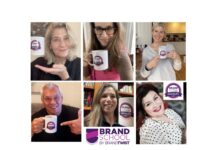Today, the luxury fashion market is facing many challenges – as many business are. Mass brands are growing in reach and competing with Luxury brands, and Luxury brands are forming partnerships with Mass retailers to meet new audiences. This phenomenon of both trading-up and trading-down has increased in popularity over the past 15 years and has increased more than 40% annually in the last decade.
The co-branding strategy can:
- Strengthen a brand
- Differentiate a brand from the competition
- Extend a brand into other segments through the partner brand.
However, one of the risks in co-branding is overexposure and brand dilution.
Luxury brand dilution occurs when there’s:
- An incorrect fit between co-branding partners
- Unbalanced prestige positioning in a mass market
- Overexposure
- Lack of successful co-branding management
- Unknown strategic purpose.
For example: at first Karl Lagerfeld and H&M seemed to be the perfect fit because they share similar values, but in the long-term the differences in management caused dilution of the Lagerfeld brand. While, Vera Wang and Kohl’s at first seemed an unlikely pair but ended up a good fit because they’re both interested in management and quality control throughout the collaboration.
Furthermore, Karl Lagerfeld limited his co-branding to H&M, therefore the brand received limited exposure. Vera Wang has been collaborating with both Kohl’s and Zales making the Vera Wang brand more accessible to more mass consumers.
It may seem like Lagerfeld missed out on receiving big gains from the co-branding collaboration especially with some brand dilution, but both Lagerfield and Wang ended up benefitting from the partnerships. The strategic aim of Karl Lagerfeld was to gain knowledge, consumers and awareness through collaborating with H&M, and after the collaboration, he made his own masstige collection for the mass market. Whereas, Vera Wang’s SimplyVera collaboration with Kohl’s was to increase her consumer segment and branch into the lifestyle market.
What lessons can your businesses learn from these collaborations?
As the world becomes more accessible, brands need to follow suit and become more accessible to reach broader audiences. Collaborations and partnerships are powerful tools to help spread brand awareness, but it’s important to have a firm understanding on what your desired benefit is – before you launch a partnership.
Having a solid brand vision is essential when designing the next step to grow loyal brand followers. Brand School gives you the tools you need to recognize the right market for your business and chart the right course for the future. See more about our next session and a one-on-one Brand Health Check Strategy Session HERE.
“Brand School is a must class for you! The exercises really help you to focus and re-focus on what branding your company is all about. You will get results you can use for the future,” – Brenda Dillion Cavette, Fashionista Tea
About the Author:
Melanie Walt was born in Switzerland and has lived in many parts of the world. She recently finished her Master degree in Brands, Communication and Culture and has a Bachelor degree in Management with Marketing from the University of London. She is currently seeking job opportunities in the field of Marketing in Switzerland. Contact Melanie via: walt.melanie@bluewin.ch
If you would like to be a BrandTwist guest blogger, please contact Jamie@herculiz.com.







